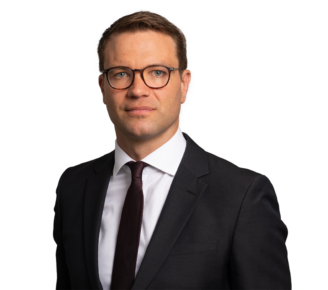In its recent decision in UK Anti-Doping v Victoria Ohuruogu (which was made public on 21 March 2024) the National Anti-Doping Panel considered a rare charge of prohibited association between an active athlete (the Respondent) and another athlete subject to a period of ineligibility following a doping offence (her partner).
Pippa Manby and Carola Binney of 4 New Square Chambers appeared on behalf of the Respondent in successfully contesting the charge.
In this article, Diarmuid Laffan, considers the context of the charge. The views expressed in this article are solely those of the author. This Article is based on the public statements of UKAD and the Respondent and media reports, as the full decision has not been publicised.
The Anti-Doping Rule Violation (“ADRV”) of prohibited association was introduced by the 2015 edition of the WADA Code to address the risks involved in athletes being trained by or otherwise associating in a sporting context with banned athletes who have committed ADRVs. To establish prohibited association under Article 2.10 of the WADA Code (and in this case its corresponding provision in the UK Anti-Doping Rules) the authority bringing the charge has to establish to the tribunal’s comfortable satisfaction that:
- A relevant athlete was subject to a period of ineligibility following an ADRV;
- The respondent athlete was aware of that ineligibility;
- The respondent associated with the banned athlete in a professional or sport-related capacity as an Athlete Support Person (broadly defined as including “any… Person working with, treating or assisting an Athlete”).
The comment to Article 2.10 of the WADA Code indicates that the rule’s concept of association is an expansive one that includes the receipt of “training, strategy, technique, nutrition or medical advice; … or allowing the Athlete Support Person to serve as agent or representative.” It is expressly noted that prohibited association need not involve any form of compensation.
If the three criteria are established by the authority, the burden of proof shifts to the athlete who can raise a defence to the charge if they can prove on the balance of probabilities that the association was not in a professional or sport-related capacity, or could not reasonably have been avoided. Notably, the WADA ADO Reference Guide that accompanied the addition of Article 2.10 to the Code in 2015 stated:
“[…] this Article does not apply in specific circumstances where association is unavoidable, i.e. husband/wife, child/parent.”
The National Anti-Doping Panel’s decision in this case is of particular interest because there are very few authorities on prohibited association. The three cases in which the Court of Arbitration for Sport has addressed the offence all relate to the banned Russian athletics coach Vladimir Semenovich Kazarin and turned on the athletes’ disputed knowledge of his ineligibility, not on the other elements of the test.
It is likely to be an ADRV which is increasingly utilised by Anti-Doping Organisations concerned about banned individuals continuing to operate in the background around other athletes even when personally ineligible.
Ms Ohuruogu is a professional athlete who competes in the 400m and 4x400m relay events. She has won medals at the World and European Championships and is aiming to be selected for Team GB at the Paris Olympics in 2024. For many years she has been in a relationship with Italian former athlete, Mr Antonio Infantino, who competed for Italy in the 100m and 200m events. At the Italian Championships on 27 June 2021 Mr Infantino returned a sample containing exogenous testosterone and subsequently accepted a three-year period of ineligibility from the National Anti-Doping Organisation of Italy, set to expire on 26 June 2024.
In December 2023 the Times Newspaper published photographs of Ms Ohuruogu and Mr Antonio attending Willesden Sports Centre together and completing two 150m sprints together with another athlete on the outdoor track. The Times reporter observed that he saw Mr Infantino using cones to mark out the distance and calling for the group’s sprint repetitions to begin. They also reported that Mr Infantino spoke to the two athletes and acted in a manner that suggested that he was leading the session. Mr Infantino insisted that he was only at the track to do his own workout, having retired from the sport.
In another article in the same month, the Times Newspaper suggested that Mr Infantino had attended a Microsoft Teams meeting for athletes on the UKA elite funding programme. It also reported seeing a video of Mr Infantino filming Ms Ohuruogu training and detailing the session she had just completed.
While the precise charges and the outcome are not public, the following interesting points arise from the context of the charge and the overall outcome:
- It is unlikely that the question of whether Ms Ohuruogu was aware of Mr Infantino’s ineligibility was a live one on the facts of the present case. However Anti-Doping Authorities would be well-advised (where able) to follow the mandatory wording in the previous iteration of the WADA Code by giving written notice to an athlete that it considers may be breaching Article 2.10 of the other party’s ineligibility.
- The broad wording of the ADO Reference Guide, so far as this is accepted as an aide to construing Article 2.10 of the WADA Code, grounds a submission that married partners, or parties such as Ms Ohuruogu and Mr Infantino who are in a comparable long-term relationship, are exempt from the Article’s prohibition on association. However, in the author’s view, this cannot be the basis for a blanket exemption. It cannot have been the intention of the drafters of Article 2.10 or even, so far as relevant, of the ADO Reference Guide that a banned athlete should be entitled to train a competing athlete so long as they are married.
- Finally, all active athletes should take heed of the fact that to train with a banned athlete is to dice with anti-doping death. Whilst the Comment wording refers to “obtaining training” which suggests that some form of active provision of training from the banned individual is required, as opposed to merely training alongside such a person, there is no authority on this point. Completing intensive sport-specific training together is about as close to the line as an athlete can get without crossing it. It is easy to see in that context how parallel training could shade into coaching (or be perceived as such) unless extreme care is taken. The more conservative path, and a justifiable one given the stakes, would be to avoid the risk involved in training with a banned athlete entirely.
Read more about our work in sports law here






